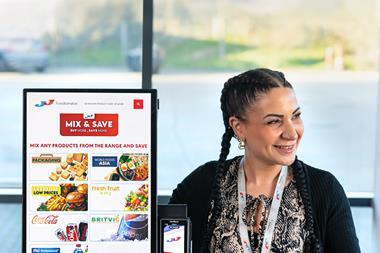>>in a polarised market, M& S must steer clear of no man’s land
Like most of you, I suspect, I have got used to the leaflets that flood out of my local newspaper each week: Asda, Marks and Spencer, Morrisons, Sainsbury, Somerfield, Tesco. They are all at it. Hang on, I hear you cry, M& S? Yup, when the M&S leaflet landed on my doormat last week, I too was surprised. But it seems that in the current competitive climate even the formerly mighty Marks and Sparks must now distribute leaflets shouting about the value of its food and drink multibuys and price cuts.
Then, earlier this week, when news of the chain’s trading statement hit my e-mail inbox, courtesy of thegrocer.co.uk (sorry, couldn’t resist that plug), things started to fall into place. M&S food sales were down 2.8%, a downward trend that just seems to keep on accelerating. Little wonder alarm bells are ringing in the City - and further afield.
I have long argued that in a polarising food retail market, where shoppers are moving towards either the value players, or those retailers trading on a quality platform, companies such as Marks and Spencer are well-placed to profit. How wrong I was. With Sainsbury clearly struggling, and Safeway in the middle of its conversion to Morrisons’ style of selling, there are no excuses for M&S. It should be doing a roaring trade: hoovering up customers like nobody’s business. But it isn’t. It too seems to be struggling.
M&S has always prided itself on selling innovative, top-notch foods for which shoppers were willing to pay a little more. But the competition has caught up, shoppers have noticed that fact and M&S is discovering that its niche is a hard one to defend. The very fact that it has resorted to stuffing leaflets into local newspapers would suggest it is running out of ideas about how best to convince shoppers about the quality of its food and drink - and the fact it offers great value for money too.
That’s a real shame. But as we report on p15, M&S boss Stuart Rose admits the retailer has lost its spark. He thinks the trick lies in defining a new quality/value equation for the chain - particularly for its clothing and homewares. As far as food is concerned, Rose faces a huge challenge in ensuring that, as M&S defines that equation, it does not slide into the middle of this polarised market. That’s No Man’s Land. And M&S cannot afford to end up there.
No Spark at marks
Like most of you, I suspect, I have got used to the leaflets that flood out of my local newspaper each week: Asda, Marks and Spencer, Morrisons, Sainsbury, Somerfield, Tesco. They are all at it. Hang on, I hear you cry, M& S? Yup, when the M&S leaflet landed on my doormat last week, I too was surprised. But it seems that in the current competitive climate even the formerly mighty Marks and Sparks must now distribute leaflets shouting about the value of its food and drink multibuys and price cuts.
Then, earlier this week, when news of the chain’s trading statement hit my e-mail inbox, courtesy of thegrocer.co.uk (sorry, couldn’t resist that plug), things started to fall into place. M&S food sales were down 2.8%, a downward trend that just seems to keep on accelerating. Little wonder alarm bells are ringing in the City - and further afield.
I have long argued that in a polarising food retail market, where shoppers are moving towards either the value players, or those retailers trading on a quality platform, companies such as Marks and Spencer are well-placed to profit. How wrong I was. With Sainsbury clearly struggling, and Safeway in the middle of its conversion to Morrisons’ style of selling, there are no excuses for M&S. It should be doing a roaring trade: hoovering up customers like nobody’s business. But it isn’t. It too seems to be struggling.
M&S has always prided itself on selling innovative, top-notch foods for which shoppers were willing to pay a little more. But the competition has caught up, shoppers have noticed that fact and M&S is discovering that its niche is a hard one to defend. The very fact that it has resorted to stuffing leaflets into local newspapers would suggest it is running out of ideas about how best to convince shoppers about the quality of its food and drink - and the fact it offers great value for money too.
That’s a real shame. But as we report on p15, M&S boss Stuart Rose admits the retailer has lost its spark. He thinks the trick lies in defining a new quality/value equation for the chain - particularly for its clothing and homewares. As far as food is concerned, Rose faces a huge challenge in ensuring that, as M&S defines that equation, it does not slide into the middle of this polarised market. That’s No Man’s Land. And M&S cannot afford to end up there.
No Spark at marks



















No comments yet